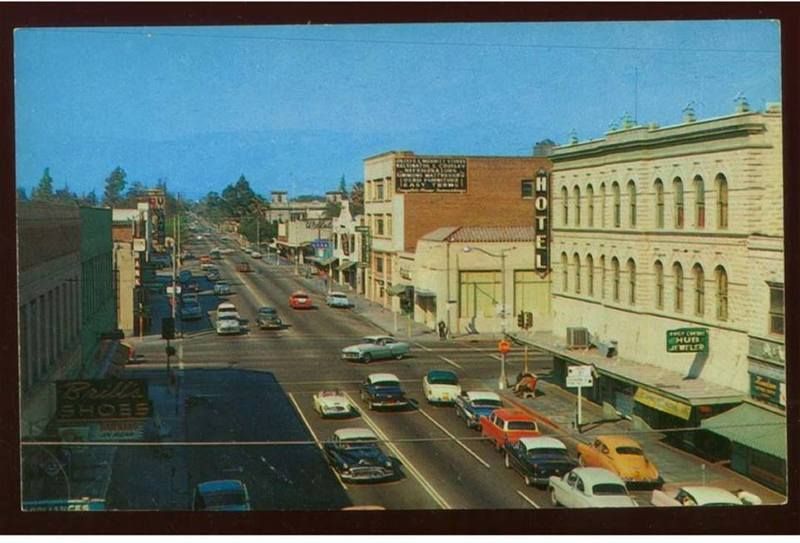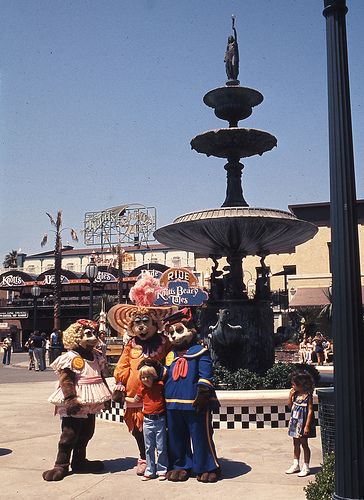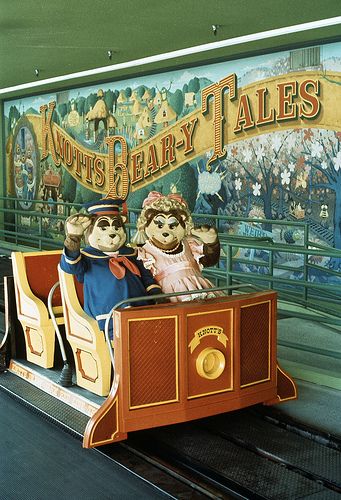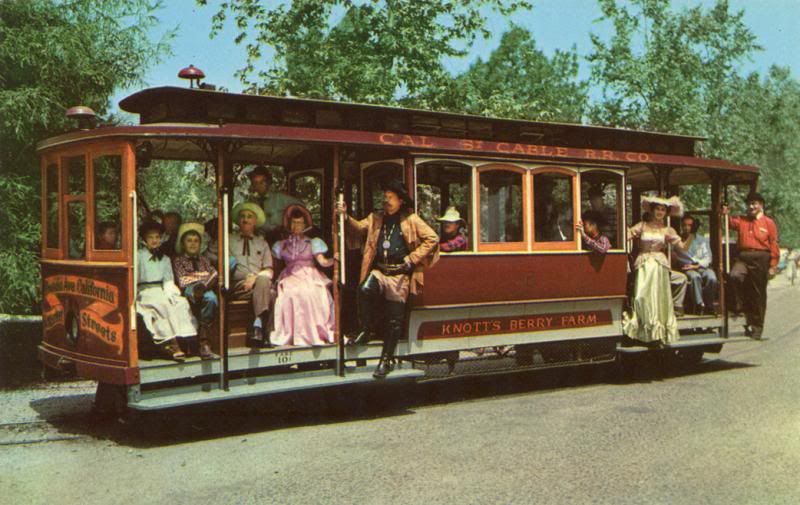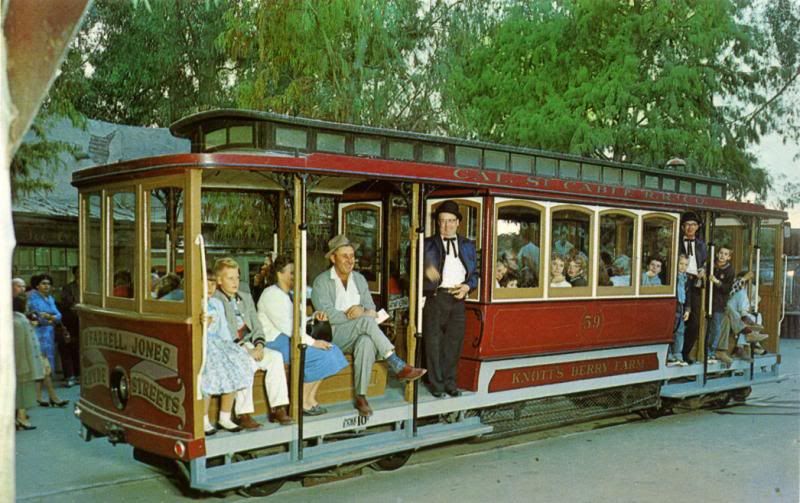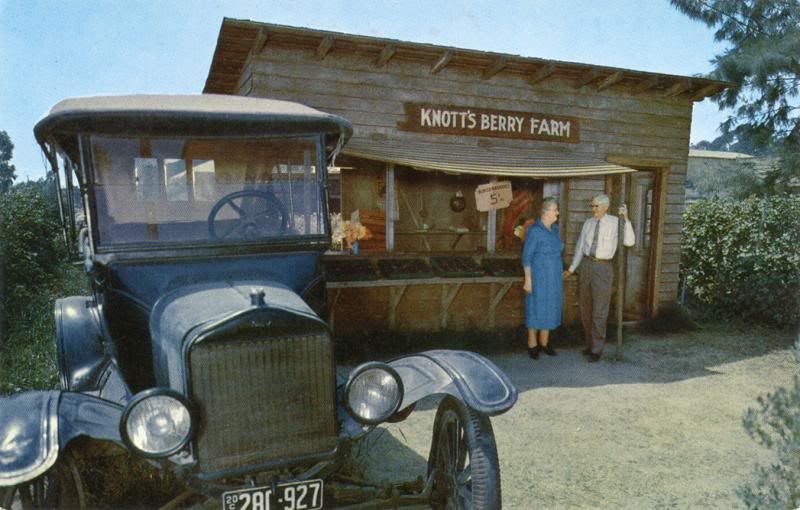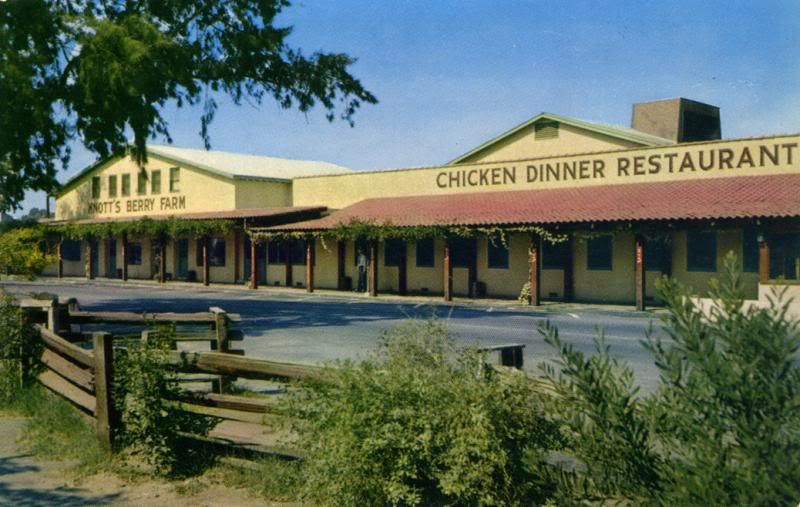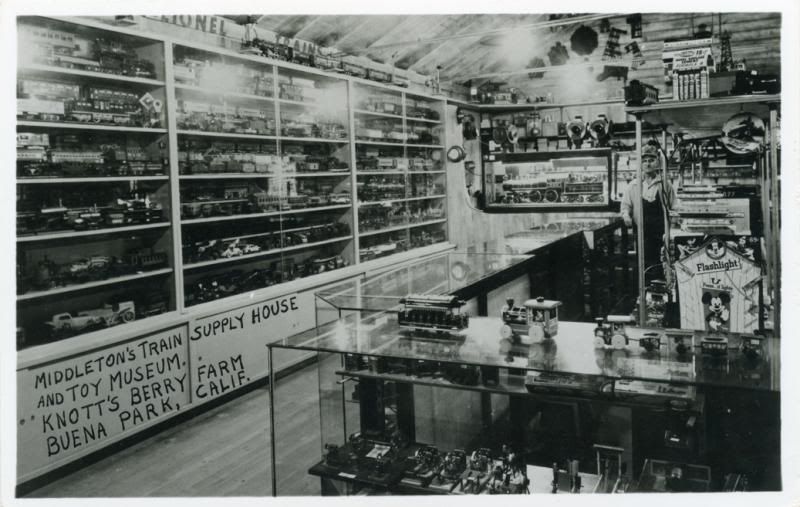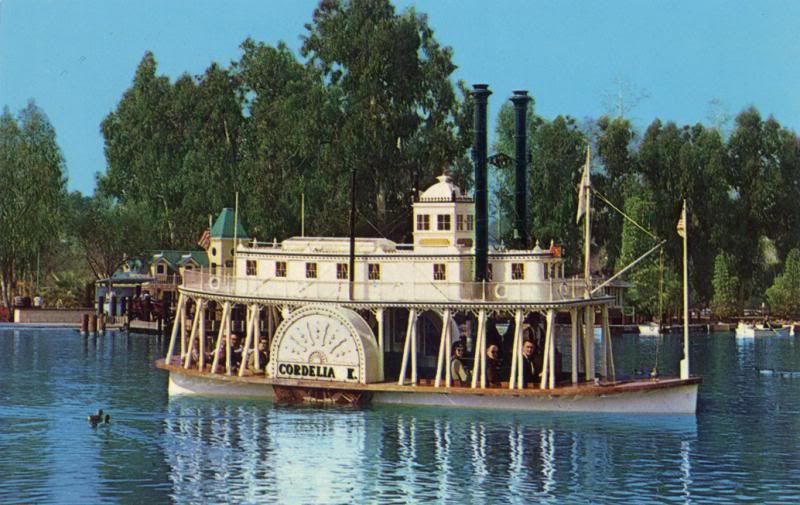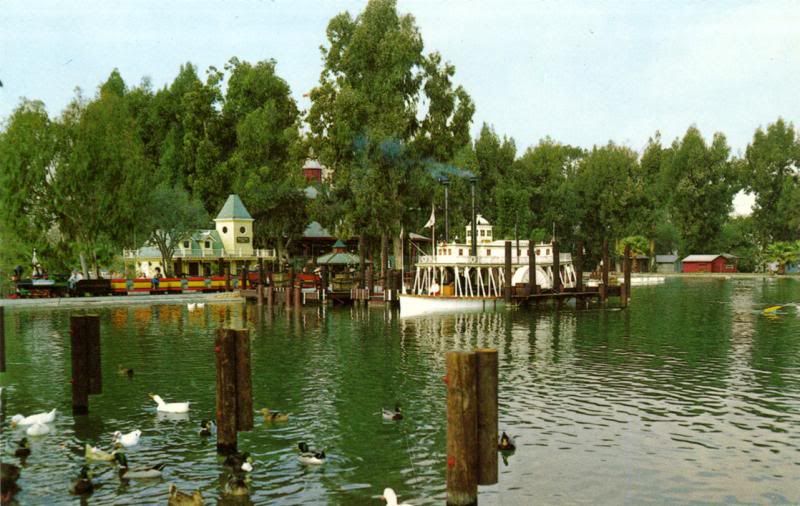SAN BERNARDINO - Driving east on Baseline in San Bernardino onward to Highland you may notice three mid-size radio towers and an unassuming shack building behind San Gorgonio High School, and probably not think much of it. There is much more to the shack building than meets the eye, because that little building behind the high school actually has quite a bit of pop musically history behind it.
That little building once housed radio station KMEN on 1290 AM, and at its peak in the 1960s that radio station was a powerhouse. Many big names in pop music history, and radio history, came through that little building.
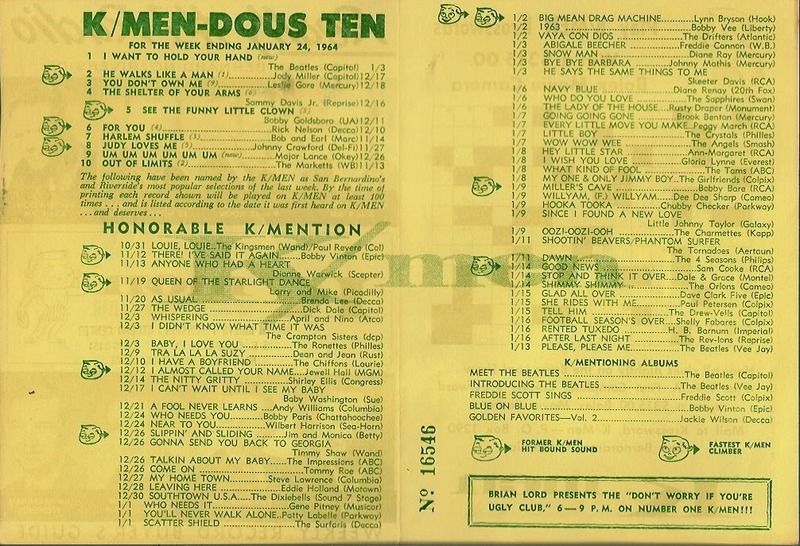
A "K/MEN-DOUS-TEN" Survey Sheet ending January 24, 1964, and of course The Beatles are number one.
Sometimes lost or buried in radio broadcast history with much focus on stations like, 93/KHJ, 1110/KRLA, 77/WABC or 89/WLS, KMEN never quite received its due in broadcast history.
Known as K/MEN 129 with its deejay personalities known as The K/MEN this radio station broadcasting out by a cow pasture was once a force in the radio and music industry.
In an era of YouTube, Pandora, Spotify, iTunes, Soundcloud and other forms of new media to check out new bands, for a younger generation it may be hard to imagine that radio was nearly the only place you can check out new bands. Even for new bands today, it may be hard to imagine the backing you needed from radio to have some sort of success. Back then, before the Internet, before cable television (if you can even imagine such a time), radio was one of the biggest forms of entertainment for kids, teens and adults. Bands back then did not have all these outlets to have their music heard, and bands knew radio was the place to go if you wanted to be heard.
Adding to bands wanting to be heard, competition from rival Inland Empire top 40 station 59/KFXM added to the sense of urgency on K/MEN's part to be the first in airing the newest bands.
Here are four things K/MEN 129 has in connection to music history.
1 - The Rolling Stones
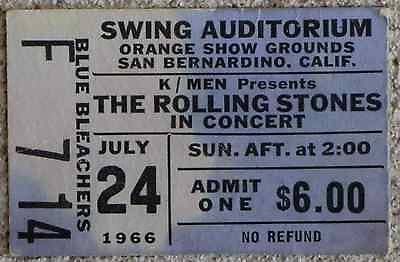
A 1966 ticket stub of The Rolling Stones' performance at The Swing Auditorium.
It was K/MEN that brought The Rolling Stones for their very first U.S. performance at The Swing Auditorium in San Bernardino. How this radio station in San Bernardino brought them to the U.S. for the first time is a whole story in and of itself, which we will have in the not too distant future. The short story is, in the wake of The British Invasion K/MEN had a connection in London sending them the latest British hit-makers, and basically looking and hoping to find the next Beatles. Well, K/MEN's London connection sent them an album by "this group that is better than The Beatles," as their London connection described The Rolling Stones. Afternoon K/MEN personality Bill Watson played a cut from the album, suddenly the telephone lines were jammed, and "Mr. Kicks," as Bill Watson was known, did something extraordinarily out of the ordinary for top 40 radio and played the entire album.
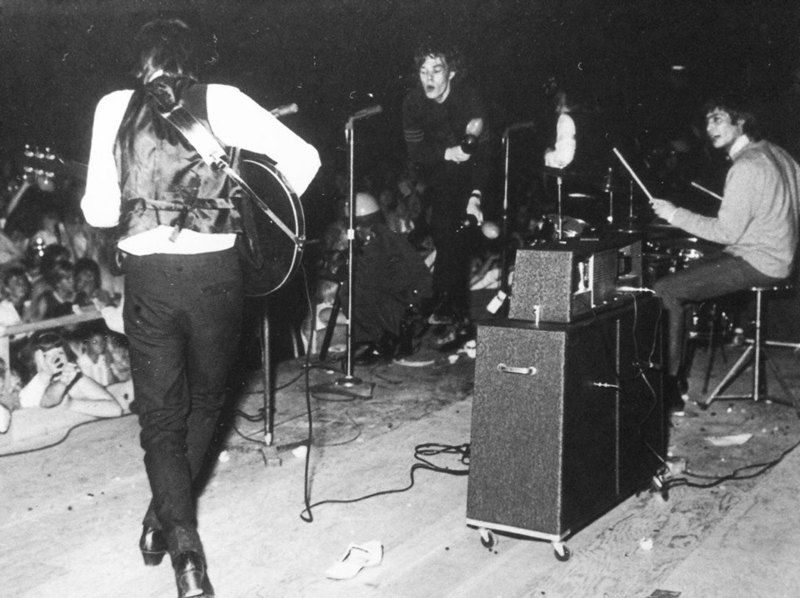
Mick Jagger on stage at The Swing Auditorium in San Bernardino doing his thing.
The Rolling Stones had made plans to tour the United States, but Mr. Watson knew they needed to get this band now! Mr. Watson, calling across The Atlantic, finally got in touch in The Rolling Stones' manager Andrew Loog Oldham. After some deals were cut, and told of the reaction of The Rolling Stones, Mick Jagger and company soon took to the U.S. stage for the very first time in San Bernardino thanks to K/MEN.
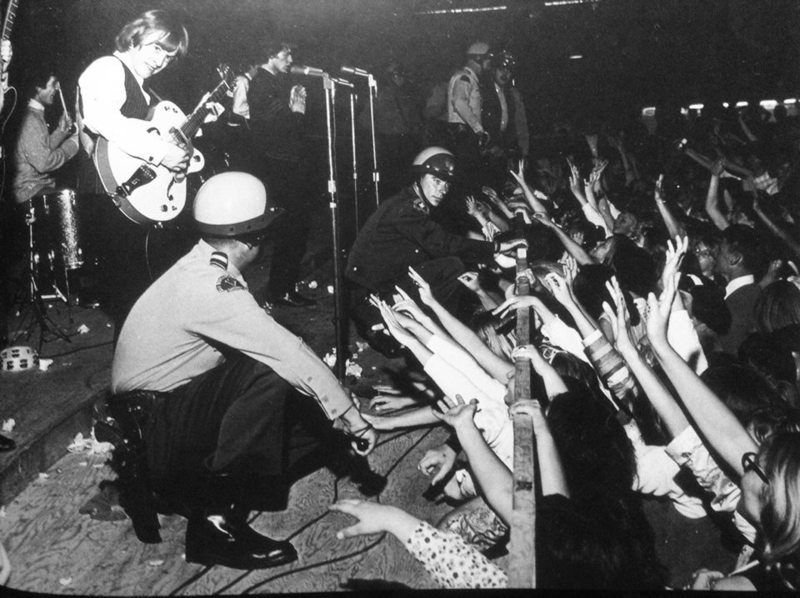
Those are San Bernardino Sheriff's deputies keeping the screaming girls back from "attacking" The Rolling Stones.
2 - The Beach Boys
Many singers, songwriters and bands came through the small lobby of K/MEN hoping their tune will make it on-the-air. Among these many hopeful bands who came through was a group of brothers from Hawthorne who called themselves, The Beach Boys. Mr. Watson, who, by the way, was the program direction, really liked this band and told them to get their music properly licensed and they will play it. Once the guys from Hawthorne got all the legal stuff taken care of it is believed K/MEN was the first to play The Beach Boys. In later years The Beach Boys replied in kind by singing jingles for K/MEN.
3 - Up, Up and Away with Jimmy Webb
Not too long ago we wrote about Colton, and one of its well known residents was singer/songwriter Jimmy Webb, who was certainly influenced by what K/MEN was playing. One of Mr. Webb's biggest hits he wrote was, "Up, Up and Away," performed by The Fifth Dimension (and sung by other performers over the years). Well, K/MEN once had its own hot-air balloon, and Mr. Webb thought it was a very nice looking thing, and so he wrote a song about it, and that tune became, "Up, Up and Away." In fact, the song was originally meant to be part of a K/MEN promotion. Apparently, the story goes, Mr. Webb wrote the song in just one afternoon sitting in his car at the Robert Hall Clothes store parking lot on La Cadena Drive and Mount Vernon Avenue in Colton (after sitting empty for many years a 99 Cent Only Store now occupies the old Robert Hall clothing store).
They may be a little out of sync in this video, but the tune written by Colton's Jimmy Webb and performed by The Fifth Dimension makes for pure top 40 AM gold.
4 - John Peel
Before he began his legendary music show on BBC Radio 1 the man known as John Peel was across the pond here in the states hosting the morning show on K/MEN in 1965. Back then while in Inland Empire radio he was not known as John Peel, but rather he did something highly odd in radio, he used his real name on-air, John Ravenscroft. John Peel returned to England in 1967 and found a gig for a short time at Radio London aboard one of England's pirate radio ships (many of these England radio pirates were supported by U.S. record labels and had their radio jingles supplied by U.S. jingle makers). Mr. Peel would begin his BBC career later in 1967 and soon became a force in discovering and exposing England to underground, punk, new wave and alternative music. The Peel Sessions soon became, and still are, sought after albums.
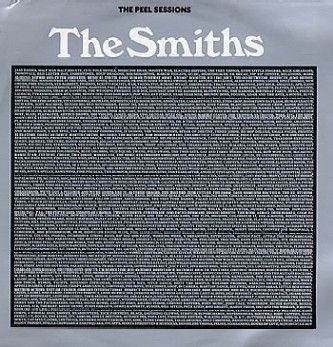
The Peel Sessions record with The Smiths. Used under Fair Use.
That little building once housed radio station KMEN on 1290 AM, and at its peak in the 1960s that radio station was a powerhouse. Many big names in pop music history, and radio history, came through that little building.

A "K/MEN-DOUS-TEN" Survey Sheet ending January 24, 1964, and of course The Beatles are number one.
Sometimes lost or buried in radio broadcast history with much focus on stations like, 93/KHJ, 1110/KRLA, 77/WABC or 89/WLS, KMEN never quite received its due in broadcast history.
Known as K/MEN 129 with its deejay personalities known as The K/MEN this radio station broadcasting out by a cow pasture was once a force in the radio and music industry.
In an era of YouTube, Pandora, Spotify, iTunes, Soundcloud and other forms of new media to check out new bands, for a younger generation it may be hard to imagine that radio was nearly the only place you can check out new bands. Even for new bands today, it may be hard to imagine the backing you needed from radio to have some sort of success. Back then, before the Internet, before cable television (if you can even imagine such a time), radio was one of the biggest forms of entertainment for kids, teens and adults. Bands back then did not have all these outlets to have their music heard, and bands knew radio was the place to go if you wanted to be heard.
Adding to bands wanting to be heard, competition from rival Inland Empire top 40 station 59/KFXM added to the sense of urgency on K/MEN's part to be the first in airing the newest bands.
Here are four things K/MEN 129 has in connection to music history.
1 - The Rolling Stones

A 1966 ticket stub of The Rolling Stones' performance at The Swing Auditorium.
It was K/MEN that brought The Rolling Stones for their very first U.S. performance at The Swing Auditorium in San Bernardino. How this radio station in San Bernardino brought them to the U.S. for the first time is a whole story in and of itself, which we will have in the not too distant future. The short story is, in the wake of The British Invasion K/MEN had a connection in London sending them the latest British hit-makers, and basically looking and hoping to find the next Beatles. Well, K/MEN's London connection sent them an album by "this group that is better than The Beatles," as their London connection described The Rolling Stones. Afternoon K/MEN personality Bill Watson played a cut from the album, suddenly the telephone lines were jammed, and "Mr. Kicks," as Bill Watson was known, did something extraordinarily out of the ordinary for top 40 radio and played the entire album.

Mick Jagger on stage at The Swing Auditorium in San Bernardino doing his thing.
The Rolling Stones had made plans to tour the United States, but Mr. Watson knew they needed to get this band now! Mr. Watson, calling across The Atlantic, finally got in touch in The Rolling Stones' manager Andrew Loog Oldham. After some deals were cut, and told of the reaction of The Rolling Stones, Mick Jagger and company soon took to the U.S. stage for the very first time in San Bernardino thanks to K/MEN.

Those are San Bernardino Sheriff's deputies keeping the screaming girls back from "attacking" The Rolling Stones.
2 - The Beach Boys
Many singers, songwriters and bands came through the small lobby of K/MEN hoping their tune will make it on-the-air. Among these many hopeful bands who came through was a group of brothers from Hawthorne who called themselves, The Beach Boys. Mr. Watson, who, by the way, was the program direction, really liked this band and told them to get their music properly licensed and they will play it. Once the guys from Hawthorne got all the legal stuff taken care of it is believed K/MEN was the first to play The Beach Boys. In later years The Beach Boys replied in kind by singing jingles for K/MEN.
3 - Up, Up and Away with Jimmy Webb
Not too long ago we wrote about Colton, and one of its well known residents was singer/songwriter Jimmy Webb, who was certainly influenced by what K/MEN was playing. One of Mr. Webb's biggest hits he wrote was, "Up, Up and Away," performed by The Fifth Dimension (and sung by other performers over the years). Well, K/MEN once had its own hot-air balloon, and Mr. Webb thought it was a very nice looking thing, and so he wrote a song about it, and that tune became, "Up, Up and Away." In fact, the song was originally meant to be part of a K/MEN promotion. Apparently, the story goes, Mr. Webb wrote the song in just one afternoon sitting in his car at the Robert Hall Clothes store parking lot on La Cadena Drive and Mount Vernon Avenue in Colton (after sitting empty for many years a 99 Cent Only Store now occupies the old Robert Hall clothing store).
They may be a little out of sync in this video, but the tune written by Colton's Jimmy Webb and performed by The Fifth Dimension makes for pure top 40 AM gold.
4 - John Peel
Before he began his legendary music show on BBC Radio 1 the man known as John Peel was across the pond here in the states hosting the morning show on K/MEN in 1965. Back then while in Inland Empire radio he was not known as John Peel, but rather he did something highly odd in radio, he used his real name on-air, John Ravenscroft. John Peel returned to England in 1967 and found a gig for a short time at Radio London aboard one of England's pirate radio ships (many of these England radio pirates were supported by U.S. record labels and had their radio jingles supplied by U.S. jingle makers). Mr. Peel would begin his BBC career later in 1967 and soon became a force in discovering and exposing England to underground, punk, new wave and alternative music. The Peel Sessions soon became, and still are, sought after albums.

The Peel Sessions record with The Smiths. Used under Fair Use.
